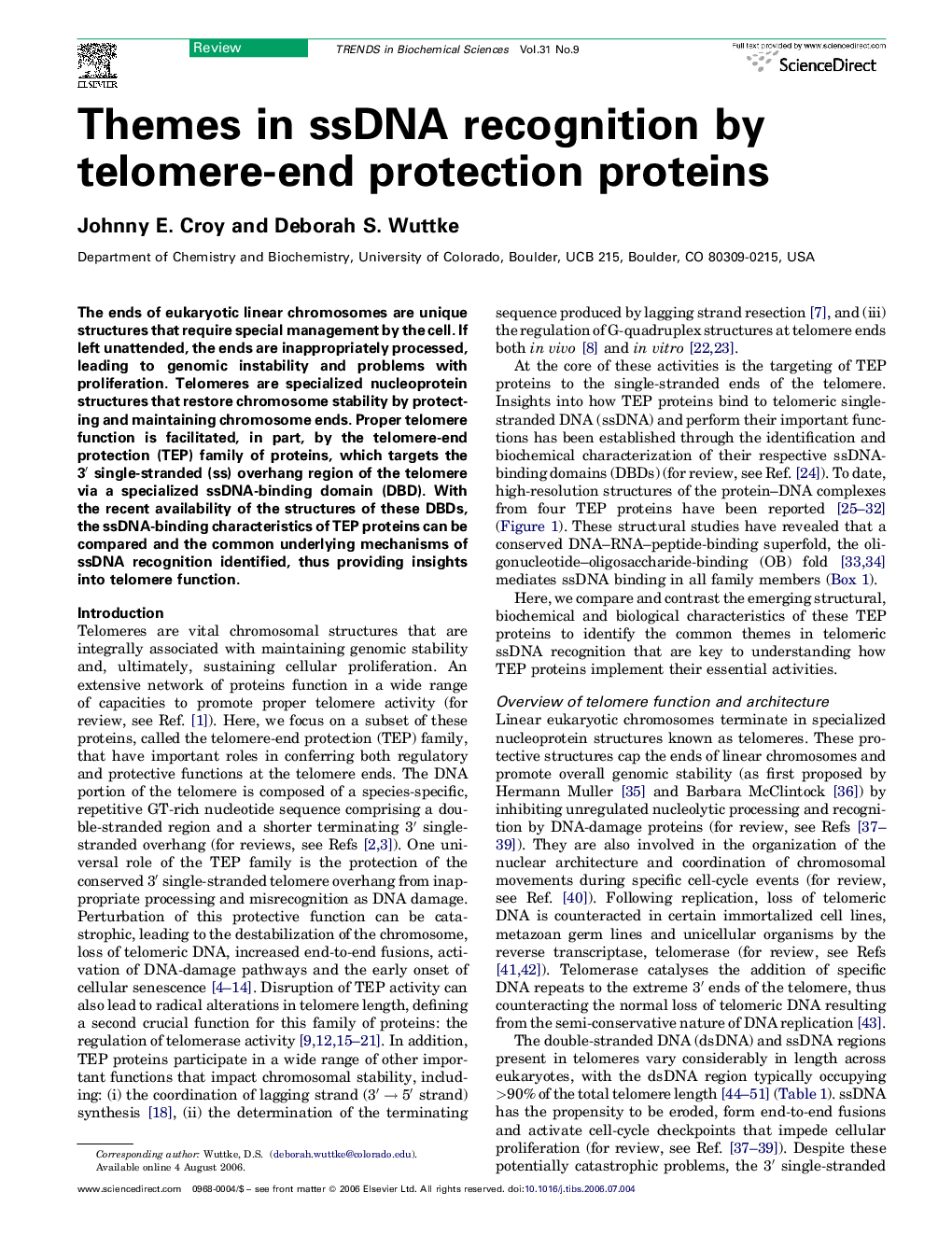| Article ID | Journal | Published Year | Pages | File Type |
|---|---|---|---|---|
| 2031504 | Trends in Biochemical Sciences | 2006 | 10 Pages |
The ends of eukaryotic linear chromosomes are unique structures that require special management by the cell. If left unattended, the ends are inappropriately processed, leading to genomic instability and problems with proliferation. Telomeres are specialized nucleoprotein structures that restore chromosome stability by protecting and maintaining chromosome ends. Proper telomere function is facilitated, in part, by the telomere-end protection (TEP) family of proteins, which targets the 3′ single-stranded (ss) overhang region of the telomere via a specialized ssDNA-binding domain (DBD). With the recent availability of the structures of these DBDs, the ssDNA-binding characteristics of TEP proteins can be compared and the common underlying mechanisms of ssDNA recognition identified, thus providing insights into telomere function.
